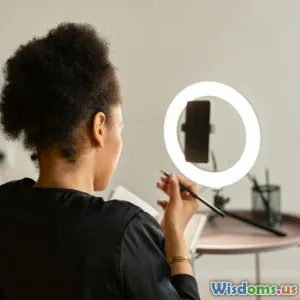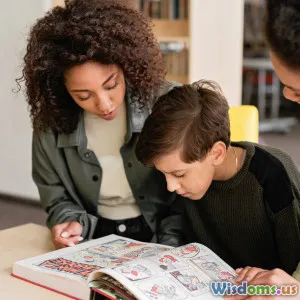
Advice from Teachers Blending Traditional Methods with New Tech
7 min read Explore how teachers successfully blend traditional teaching with new technology for smarter learning outcomes. (0 Reviews)
Advice from Teachers Blending Traditional Methods with New Tech
Education is undergoing a transformation. In a world awash with digital tools, educators face a pivotal question: how to balance the proven effectiveness of traditional teaching methods with the possibilities unlocked by new technology? Rather than viewing these approaches as opposing forces, many teachers around the globe are blending the best of both worlds to create more engaging and effective learning experiences.
The Importance of Integrating Tradition with Innovation
Traditional teaching methods — lectures, direct instruction, and hands-on activities — have shaped education for centuries. They offer structure and have a well-studied impact on knowledge retention. Meanwhile, new technologies such as tablets, interactive whiteboards, virtual reality (VR), and learning management systems (LMS) open up fantastic opportunities for personalization, immediate feedback, and immersive experiences.
As Dr. Anne Matthews, a veteran educator with over 25 years' experience and tech consultant, explains, “Technology shouldn’t replace good teaching; it should enhance it. The blend makes learning more holistic.”
Understanding Traditional Methods' Enduring Value
Traditional methods emphasize interpersonal interaction and discipline. They help develop foundational skills such as critical thinking through debate or written articulation through essays. For example:
- Socratic Method: Encourages a dialogic exploration of ideas, sharpening students’ reasoning skills.
- Direct Instruction: Provides clear scaffolding and explicit teaching for complex concepts.
- Hands-on Experiments: Engages tactile and kinesthetic learners deeply.
These strategies foster focus and interpersonal skills — soft skills incredibly valuable in today’s workplace.
Leveraging New Technology Smartly
Technology tools offer educators unique advantages that address limitations of traditional approaches.
Examples of New Tech Use in Schools:
- Flipped Classrooms via Videos: Students watch lectures at home and use class-time for problem-solving, leveraging one-on-one teacher support.
- Interactive Quizzing Platforms: Applications like Kahoot! and Quizlet transform assessments into lively, immediate feedback loops.
- Virtual Reality Modules: Museums and historical locations come alive virtually, providing context that textbooks alone cannot.
Studies confirm technology use increases engagement; the 2019 Pew Research Center survey found 87% of educators believe tech tools improve learning outcomes when used properly.
Advice from Teachers: Best Practices for Blending Methods
1. Prioritize Pedagogy, Not Just Tech
Janet Lee, middle school teacher, emphasizes, “Tech should serve the lesson, not lead it.” She carefully selects digital tools that complement her lesson objectives rather than distract.
2. Maintain Structure with Flexibility
Combining traditional lecture styles with interactive apps, Lee creates a reliable routine while keeping students excited. For instance, outfits her classroom with a digital smartboard but also incorporates regular paper quizzes.
3. Foster Social Interaction and Collaboration
Technology can intimidate group work, but blended approaches avoid isolating students. Collaborative document editing and discussion forums, supplemented by in-person brainstorming, work well.
4. Use Data to Inform Teaching
Modern LMS provide real-time analytics on student performance, enabling early intervention. For example, Carlos Ramirez, a high school science teacher, uses these insights to customize group projects.
5. Blend Assessment Methods
Relying only on digital multiple-choice tests can limit critical thinking assessment. Combining these with traditional essays or presentations provides a fuller understanding.
6. Continuously Train and Adapt
Both the teaching staff at an innovative school in Finland and at traditional settings stress ongoing professional development to handle emerging technologies effectively.
Challenges and How to Overcome Them
Blending tradition and tech isn’t without obstacles:
- Resource Inequality: Not every school has high-speed internet or devices for every student. Solutions include bringing in offline technology or rotating device use.
- Teacher Preparedness: Effective integration requires time and willingness to learn. Peer mentoring programs help.
- Student Distraction: Clear digital usage guidelines set boundaries.
A 2021 report by UNESCO underscores these recommendations, emphasizing tailored solutions to diverse learning environments.
Real-World Success Stories
At Lincoln Elementary School, teachers introduced tablet use alongside regular journal writing. After one academic year, reading comprehension scores rose by 15%, demonstrating effective synergy.
Meanwhile, at a rural high school in Costa Rica, combining traditional outdoor science experiments with drone technology for environmental studies sparked unprecedented student enthusiasm.
Conclusion: A Future Where Old Meets New for Smarter Learning
The fusion of time-honored teaching strategies and cutting-edge technology creates environments where students not only memorize facts but develop critical skills, creativity, and lifelong learning habits. Educators who master this blend are ideally poised to meet the challenges of 21st-century education.
In the wise words of educator and author Eric Sheninger, “Technology alone doesn’t improve learning. Intentional use guided by skilled teachers does.” As classrooms evolve, the partnership between tradition and innovation promises richer and smarter education for all.
Take Action: If you’re an educator or learner, start exploring simple ways to combine traditional and new methods—your journey to smarter, more engaging learning begins today.
Rate the Post
User Reviews
Popular Posts





















